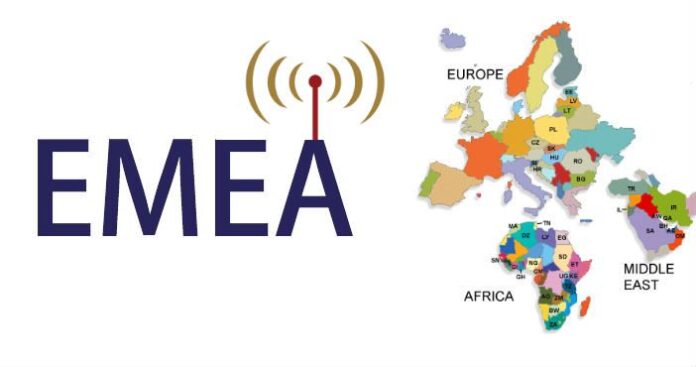Hannover, Germany – On the last day of CeBit15, the Automotive IT Kongress also took place in the city. Presenters included a combination of OEM, telecommunications and IT vendors, and industry experts on the topic of IT in the automotive industry and the implications to the connected car. Sounds like it could have been a dry topic; in reality, my expectations were greatly exceeded.
OEMs
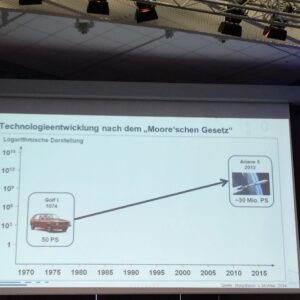 The CIOs from Volkswagen, Mercedes and BMW all spoke. I was pleasantly surprised to hear them all talk about moving to an Agile development process in order to stay competitive with other industry innovators. Dr. Martin Hoffman, Group CIO Volkswagen AG talked about holding internal and external hackathons to look for new ideas and the creation of a data lab in Munich and a digital lab in Berlin to work with startups as additional alternatives to find innovation. He also spoke about how an OEM does business in comparison with how Amazon or Google do business and the need to move in that direction. Dealer services should be available in an Amazon-type format: Amazon updates their offers about every 13 seconds, while the typical OEM only does that once or twice a year. He talked about Moore’s law, and how if it related to cars we’d all be traveling around in rockets by now.
The CIOs from Volkswagen, Mercedes and BMW all spoke. I was pleasantly surprised to hear them all talk about moving to an Agile development process in order to stay competitive with other industry innovators. Dr. Martin Hoffman, Group CIO Volkswagen AG talked about holding internal and external hackathons to look for new ideas and the creation of a data lab in Munich and a digital lab in Berlin to work with startups as additional alternatives to find innovation. He also spoke about how an OEM does business in comparison with how Amazon or Google do business and the need to move in that direction. Dealer services should be available in an Amazon-type format: Amazon updates their offers about every 13 seconds, while the typical OEM only does that once or twice a year. He talked about Moore’s law, and how if it related to cars we’d all be traveling around in rockets by now.
Nikitas Drakopolous, CIO of Mercedes-Benz Cars could have been a CMO instead of a CIO based on his talk. He spoke about the customer experience of owning a Mercedes throughout the lifecycle of the car. He talked about bringing together the digital and physical brand to be a consistent experience and how interactivity with the car makes it more interesting. “Cars need to be more interactive, like an expensive smartphone on wheels,” he said. He also talked about copying Amazon and offering car automotive functions as a service. Most interesting was his view on car and driver data. The vehicle data belongs to Mercedes and the driving data belongs to Mercedes. And they will never share it with Google. Managing and storing this data is becoming a substantial challenge. An S class Mercedes has 120 ECUs currently onboard. These sensors create billions of bits of data per month, which is currently stored on the vehicle. 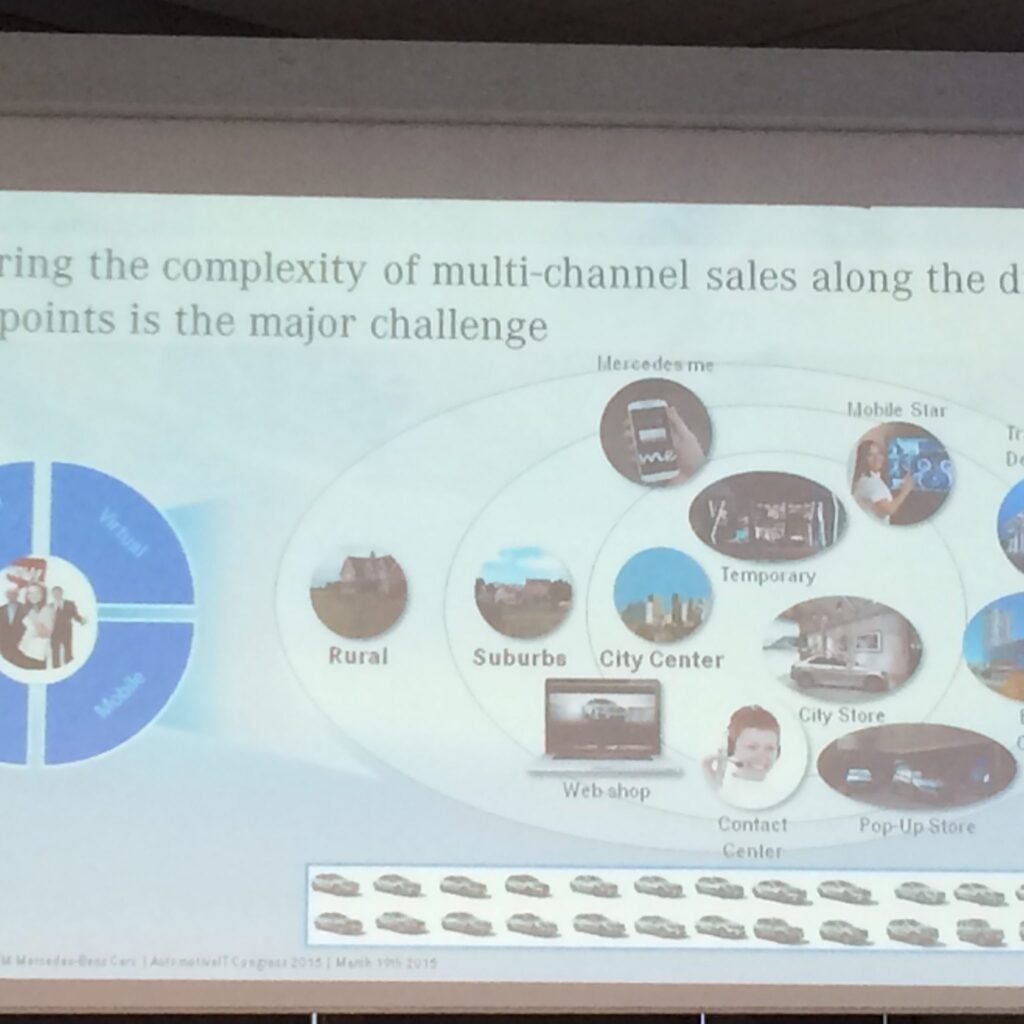
Operators
T-Systems also presented on the topic of digitization, the “Internet of Things” and how the connected car drives the requirement for more data. The company representatives discussed the opportunity for new business models in order to keep track of the information coming from the car sensors. Who will store and mange all of this data; the OEMs, the network operators or some combination of the two? They truly believe that one day everything is connected to each other.
Software Vendors
Hewlett-Packard and IAV talked about autonomous driving and the implications to data management and challenges still to be addressed. The data management and storage challenge is quickly gaining momentum. When a semi-autonomous car is on the road (2016) it will be generating 100 terabytes of data and this data needs to be stored for 15-35 years, based on automotive regulation requirements. IAV discussed the timeline for autonomous vehicles to be driven by the V2X part of the solution. The functionality within the car to navigate based on its surroundings is well underway and will come to market in increments. Navigation systems can provide directional data and near-field sensors provide safety data. The biggest challenge is with communicating to the surrounding infrastructure; traffic lights for example. Imagine the software for an autonomous car for only a few hundred dollars? Check it out at AdasWorks.
Hardware Vendors
Alcatel-Lucent talked about its vision for the connected car cloud, connected car solutions and big data storage. The company has been quiet on this topic vs. its peers in the telecom equipment vendor space and it’s good to hear their strategy out in public. I’m hoping to hear more from the company in the near future on “The Vehicle of You” topic.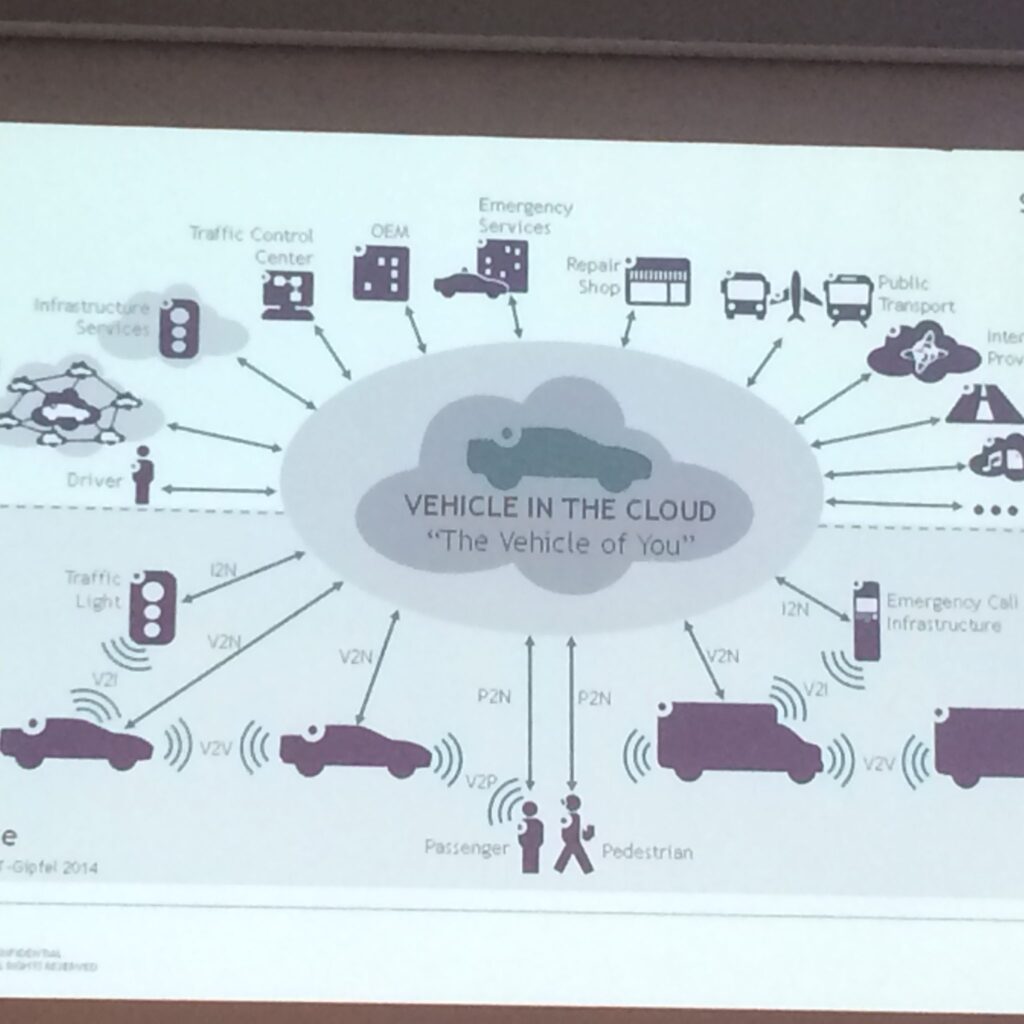
Industry Experts
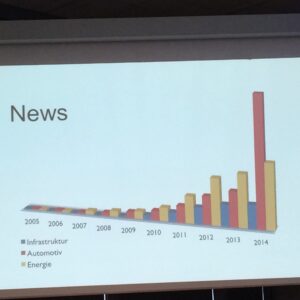 I can’t overlook the security discussion from Michael George, a former German anti-espionage agent and author of “Hacked: How Network Attacks Threaten Us All.” He talked about real challenges with the security of information and attacks on various types of networks. One of the slides he shared showed the number of attacks in the news on various industry segments; the automotive results might be shocking to you. This reiterates the importance of security in the car. Why is the car such a important target; not only for malicious intent to the car and driver, but more importantly to access their data? “Data is the new gold,” in George’s view.
I can’t overlook the security discussion from Michael George, a former German anti-espionage agent and author of “Hacked: How Network Attacks Threaten Us All.” He talked about real challenges with the security of information and attacks on various types of networks. One of the slides he shared showed the number of attacks in the news on various industry segments; the automotive results might be shocking to you. This reiterates the importance of security in the car. Why is the car such a important target; not only for malicious intent to the car and driver, but more importantly to access their data? “Data is the new gold,” in George’s view.
Like what you read? Follow me on twitter!
Claudia Bacco, Managing Director – EMEA for RCR Wireless News, has spent her entire career in telecom, IT and security. Having experience as an operator, software and hardware vendor and as a well-known industry analyst, she has many opinions on the market. She’ll be sharing those opinions along with ongoing trend analysis for RCR Wireless News.

